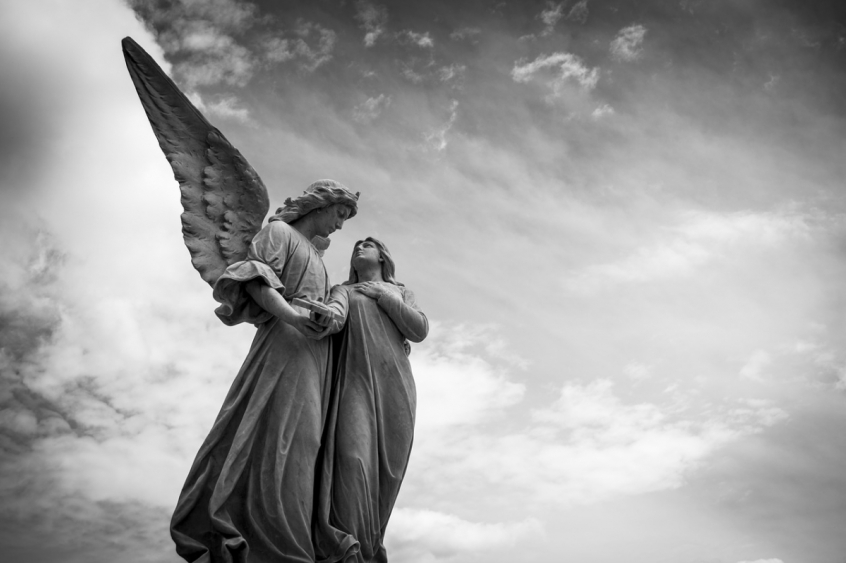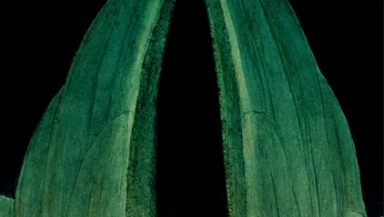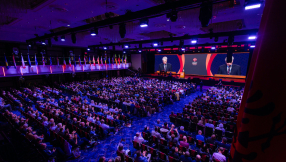Angels are popular. Many people believe in them and, for a supposedly secular age, a surprising number of individuals have seen them. They're even present to about seven per cent of those who don't believe in God, according to research from the Theos think tank.
This situation is the springboard for the new book by the Catholic writer and journalist Peter Stanford. He's interested in the parts of religious experience and spiritual life that thrive when institutional forms of church, temple and synagogue struggle. Angels are a prime case in point.

He also became interested in angels after interviewing Lorna Byrne, the Irish angel seer and, now, hugely successful author. I have spoken with her, too, and I understand the fascination with angels meeting her provokes.
As we talked, I could see her glancing up, looking over my shoulder. 'Can you see my guardian angel?' I asked. 'Oh yes,' she said. 'I've never met anyone who didn't have a guardian angel. It would be very disturbing if I did.' I came away feeling she was indeed seeing something.
That she might see angels seemed right when I made a link with my work as a psychotherapist. As I read Byrne's books, I noticed that most of the angels she sees, who are guardian angels, convey to her something of the inner life of their charges. They tell of a hidden side that may be agitated or panicked or withdrawn.
In psychotherapy, felt ways of listening are used to gain insights into someone's inner life that otherwise fall below the level of awareness. One person might say they're fine, and yet make a psychotherapist feel edgy. Another might be full of anger, but create an air of sadness.
In the jargon, it's called the countertransference. Over time, I've learnt to trust it. The feelings suggest different ways of addressing the problems people face, often transforming the problems into opportunities for growth.
So my question for Byrne was whether what I tentatively feel, she plainly sees? Might she have a kind of synesthesia for inner life that shows up as the presences called angels?
My question is not to dismiss angels as some kind of psychological projection or neurological mistake. In the premodern world, towering intellectual figures such as Thomas Aquinas wrote lengthy angelologies. Peter Stanford describes them very well.
The assumption the theologians made was that the universe does not run on mechanical energies and forces, as modern physics assumes. They felt that it was full of the dynamism, desires and intelligence that many nowadays imagine to exist only inside their heads. That wider cosmic vitality was the humming activity of the angels.
So when Byrne sees an angel, and I perceive a feeling in the room, might we be talking about the same thing, just in different ways? I suspect that's right.
There's another reason there may be a link. It seems to me that the people who are sniffy about feelings are often the people who are sniffy about angels. They're the rational types, be they Christian, atheist or otherwise. They're a bit too 'left-brained', as the saying goes, and I think they're missing out on an entirely different way of perceiving the world, of which feeling, imagination and entities such as angels are a part.
A further factor has to do with religious crises, which Stanford discusses in his book, too. For example, an awareness of angels grew in what Christians call the intertestamental period – the two or three centuries before the birth of Jesus. Jewish authorities became anxious about their place in the Hellenistic world. There were huge, bloody debates about whether to conform with the mores and ideas of the conquering Greeks and, then, Romans.
Stanford argues that, at this time, angels expressed the hope that God had not abandoned his people. There's something important in that, though I'd add a further reason.
When religious institutions feel under threat, as they did at that time, the spiritual imagination of leaders and teachers tends to contract. They are inclined to focus on the core elements of belief and practice to the exclusion of all else. Their vision narrows. Angels then appear to widen spiritual sight.
I think the same dynamic operates today. Many churches feel under threat and, in reaction, they tend to narrow their message and draw lines in the sand. I see it in the Church of England where there's a growing stress on a particular version of the figure of Jesus.
I heard a sermon on the feast of St Michael and All Angels last year that made the point. The heart of the preacher's message was that, although angels are popular with the wider public, Christians shouldn't be seduced by their appeal. They should keep a firm focus on Jesus who alone teaches us how to live.
It struck me how different that vision is from, say, Dante's in the Divine Comedy. As the Florentine poet descends through hell, and then slowly rises through purgatory and the heavens, he encounters all sorts of spiritual beings, angels included.
God and Jesus rarely appear directly and this makes space for the richness of creation's spiritual ecology. It's quite as diverse and pulsing as the fish, birds and beasts on Earth.
My sense is that people today want to know of that spiritual ecology once more. They live in a world where it's routinely denied by scientific materialism and it feels wrong. It's not much use when preachers ignore it, too.
I also don't think that the appearance of angels today has to do with contemporary individualism, or a dislike of doctrines and discipline, as some speculate. For one thing, that would heap implicit judgment on the likes of Jesus, whose life was regularly punctuated by angelic visitations, not least while he was in the wilderness, as we recall during Lent.
For another, I've also noticed that Byrne doesn't pander to her readers or the people she meets. She is always kind to them, but is quite likely to challenge them and suggest that they be more demanding of themselves.

Her own life has been tough, as well. She has lived through the early death of her husband and one of her children. The angels accompanied her through the suffering but they didn't suggest that they'd take it away.
So how to see angels? I think it's about expanding perceptions of the world, in ways not unlike a psychotherapist who learns to trust the countertransference. Work on the assumption that thoughts and feelings may not be generated by isolated neural networks in the brain, but rather that they are shared. They flow in and out of us, much like the air we breath.
And then hold open the further possibility that they are shared by entities and intelligences that are as alive as the organisms we physically perceive around us.
One day you may see an angel as tangibly as you catch sight of the sun. Maybe before then, you'll begin to feel their heat, warmth, challenge and light.
'Angels: A Visible and Invisible History' by Peter Stanford is published by Hodder.
Mark Vernon's new book, 'A Secret History of Christianity: Jesus, the Last Inkling, and the Evolution of Consciousness', will be published in August this year. For more, see www.markvernon.com













